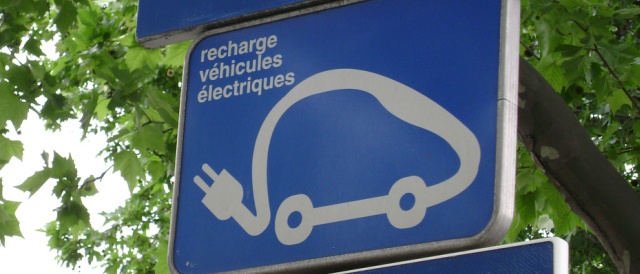Increasing demand for e-mobility does not exclude improving cars today. The days of internal combustion-propelled automobiles are numbered. But what will replace them? It’s still an open question says Paul Hockenos.

The electric Car. (Photo by david_megginson, CC BY-SA 2.0)
The Heinrich Böll Foundation’s two-day Berlin conference on the future of the automobile was anything but run-of-the-mill. It was held in cooperation with an extremely unlikely bedfellow, namely the German Association of the Automotive Industry (VDA), in the past a natural foe of Greens (the foundation is basically the Greens’ think tank). I had never seen so many people at one of the HBS gatherings. The place was positively packed – with the usual suspects, as well as a couple of hundred unfamiliar faces from the world of cars.
As disparate as the crowd was, everybody there agreed that automobiles on the German autobahns were going to look a lot different in less than 20-years’ time. And most agreed that it was still very much up in the air whether the vehicles on those autobahns would be electric, hydrogen, or natural gas powered – or some combination of the three – along with low-carbon internal combustion models.
Yet strangely, the fronts of the whole discourse have shifted. In the past, it was the green-minded types who’d say that e-mobility or hydrogen fuel cells were the answer. The automobile industry would counter that it was doing everything it could to improve on the efficiency and the reduction of carbon emissions of internal-combustion-fueled vehicles. This was doable, and everything else was fantasy.
Today the tables are turned. The automobile industry says that e-mobility or another non-hydrocarbon means of propulsion is the solution – but that solution is a long way off. Energy progressives, on the other hand, say that because the goal of zero-emission mobility is still so remote, we must make improvements in the here and now. By this, they mean the likes of free public transportation, binding limits for carbon emissions on new models, introducing e-mobility into public and company transport, getting the US to switch to diesel, car-sharing and car2go schemes, making cities smart, and the like. Of course, at the same time there should be as much forward motion as possible on zero-carbon mobility, they argue.
Carmakers and their lobby aren’t impressed. It would mean changing habits now rather than later. And please, anything but binding targets!
The fact remains that change now requires consumer demand. As long as they can sell their luxury vehicles, they will. And consumers still want big gas-guzzlers.
Here lies the crux: the car market is demand-driven; the renewable energy market, on the other hand, is now supply-driven. Since renewables have priority in the mix, the market is compelled to buy all of the clean energy that is produced at subsidized prices. The renewables boom of the 2000s wouldn’t have happened otherwise.
The mechanism responsible for the growth of the renewables supply is the feed-in tariff. There can’t, of course, be a feed-in tariff for the automobile market. But that direction is the right one. Supply has to be prioritized and demand bolstered by incentives. The kind of rebate that e-car buyers get across much of Europe is one means – but just the beginning.
This post first appeared at https://ip-journal.dgap.org/en/blog/7744